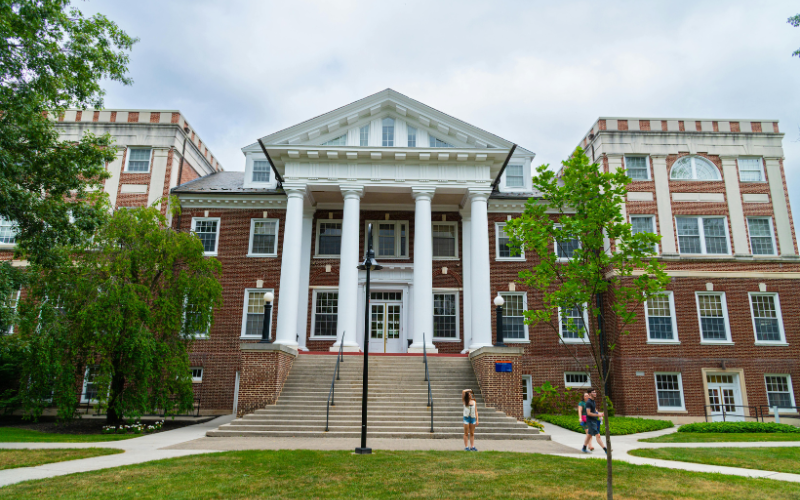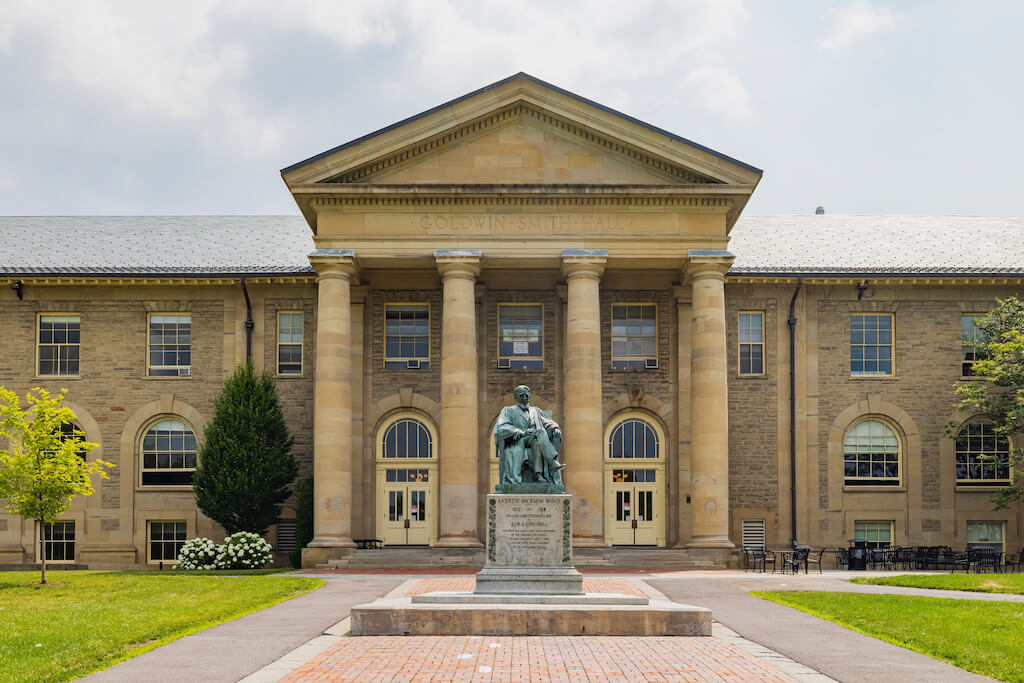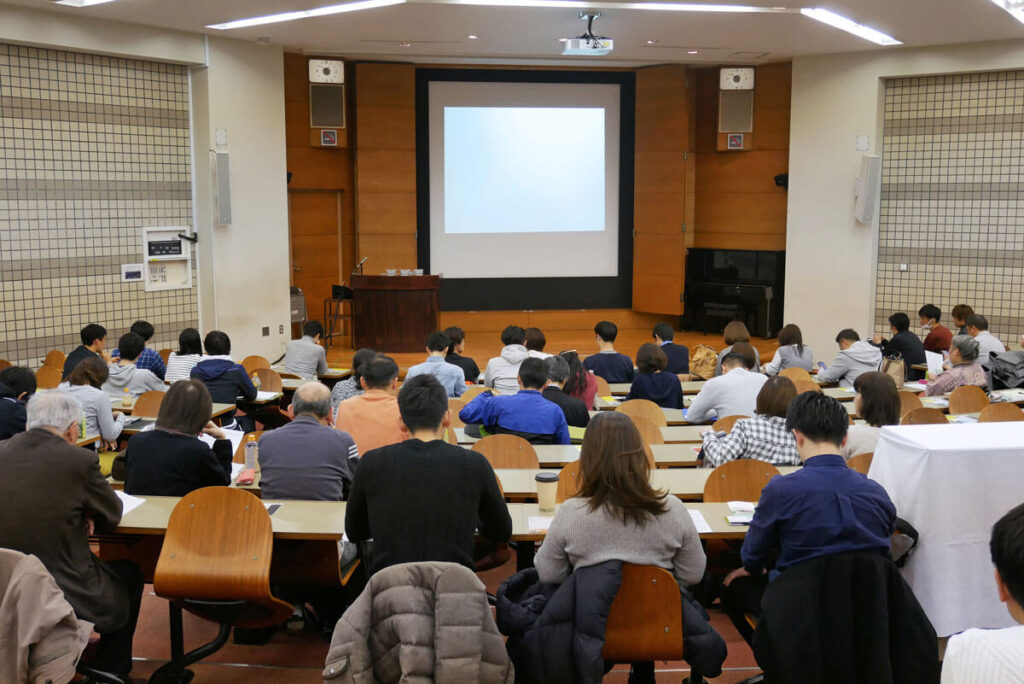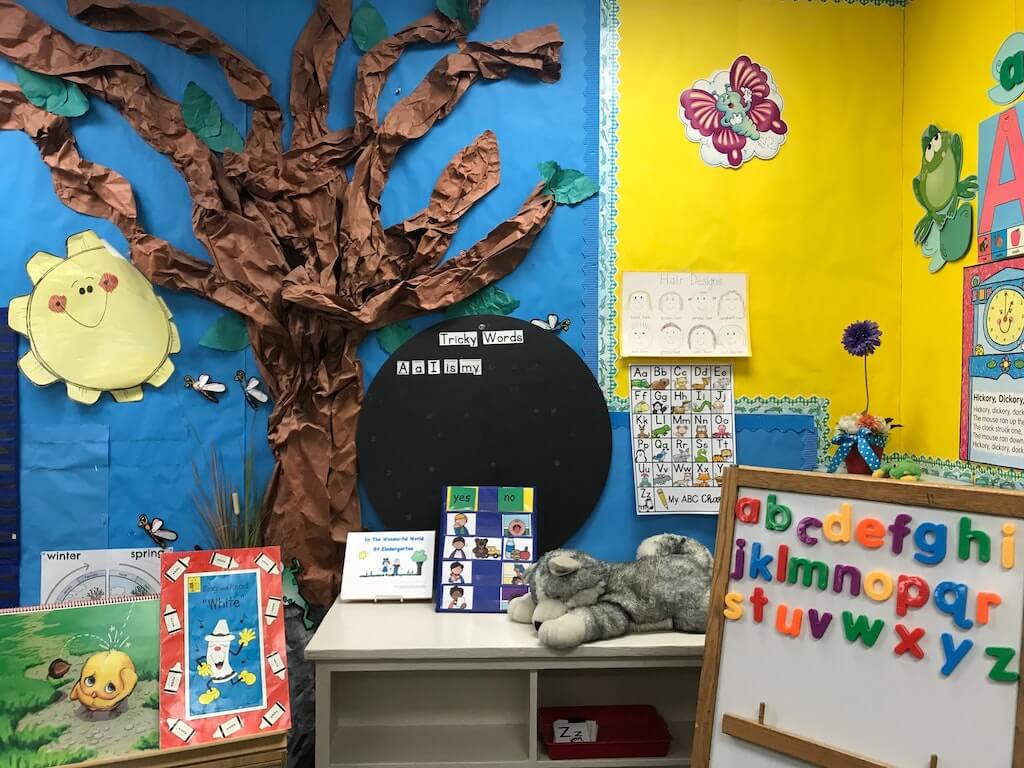Over the summer, a friend of mine asked me if I would be a luncheon speaker for a group of retired executives. The group was looking for someone to speak about the Crisis in Higher Education, and he thought I would be the perfect speaker given my two decades of involvement with online higher education. I agreed to speak and thought I would provide an outline of my speech.
“Know your audience” is a mantra that I have heard repeatedly. I assumed that most of the group’s members are college graduates, have sent their children (and maybe grandchildren) to college, and maybe one or two have served on a college board. Every speech needs a starting point. I decided to begin with a list of the 10 oldest colleges in America (still operating today). I noted that the origins of colleges in the U.S. were as places for wealthy people to send their children. Most of the earliest colleges were privately funded, some with the goal of educating clergy. Many required applicants to know Latin and Greek to attend. For years, private colleges enrolled as many students as the state-funded colleges.
The passage of the Morrill Act in 1862 provided federal funding to the states in the form of land grants to establish colleges for farmers and engineers. There are books, dissertations, and papers about the Morrill Act, but my point is that the Morrill Act of 1862 was the first major federal involvement in higher education. Congress granted the land to states to sell and use the proceeds to establish these public-funded colleges. There was a second Morrill Act in 1890 that provided funding to former Confederate states as well as to HBCU’s that had been left behind in the original act.
The next major federal initiative was 82 years later when the Servicemen’s Readjustment Act, also known as the G.I. Bill, was signed into law by President Franklin Roosevelt in June 1944. The purpose of the bill was to provide World War II veterans with funds for college education, training schools, on-the-job training, unemployment insurance, and housing. This bill gave millions of veterans the opportunity to attend college and was responsible for enlarging America’s middle class.
Eight million vets received education benefits including 2.3 million for college, 3.5 million for training school, and 3.4 million for on-the-job training. College degrees awarded in the U.S. doubled between 1940 and 1950. When the funding expired for the original bill in 1956, Congress estimated that income tax increases for the program’s beneficiaries offset the $14 billion cost. In 1957, the percentage of Americans with a four-year degree or more had nearly doubled since 1940 with 9.6 percent of men and 5.8 percent of women holding those credentials.
The next phase of federal intervention specifically relating to college students was the passage of the National Defense Education Act in 1958. The passage of this act was stimulated by the Soviet Union’s launch of the Sputnik satellite. The bill established the legitimacy of federal funding of student loans instead of grants. According to data published on the Congressional website, thanks to the passage of this bill, the number of students enrolled in college in the U.S. increased from 3.6 million in 1960 to 7.5 million in 1970.
In 1965, Congress passed the Higher Education Act as part of President Johnson’s social benefits packages. The bill was the successor to the National Defense Education Act. Title IV of the Act authorized student financial aid including grants, loans, work-study funding, and rules for financial aid need analysis. At this point in time, 3.97 million students were enrolled in public colleges and universities and 1.95 million students were enrolled in private colleges and universities. The percentage of Americans who earned a four-year degree or more were 12.0 percent of all males and 7.1 percent of all females. Notably, the percentage of Americans with a four-year degree or more had doubled over the 25 years since the start of WWII thanks to the kickstart provided by the GI Bill followed by the National Defense Education Act.
Title IX of the Higher Education Act was passed as part of a group of amendments in 1972. The amendment prohibited sexual discrimination in any program or activity at institutions receiving federal financial aid. The bill is most known for its impact on college sports forcing colleges to implement a balance in the number of athletes participating on men’s and women’s teams. Another of the 1972 amendments allowed for-profit institutions to participate in Title IV programs. In 1972, 7.07 million students were enrolled at public institutions which was a 3 million student increase since the passage of the Higher Education Act in 1965. Private college student enrollments were 2.14 million representing a 20,000-student increase over seven years. The percentages of American men and women with a four-year degree or more increased to 15.4 percent of men and 9.0 percent of women.
I added a personal reflection about my college experience. I began my freshman year of college at Duke University in the Fall of 1972. I remember seeing signup sheets all over campus for tryouts for new women’s sports teams that Duke was organizing to quickly respond to the recently passed Title IX requirements. Several of my classmates were members of Duke’s first women’s basketball, field hockey, and crew teams.
I compared the costs of attending Duke my senior year (1975-1976) with the costs of attending Towson University that same year. Tuition, room and board and estimated other costs totaled $4,224 for Duke and $2,423 for Towson. When I graduated from Duke, I had $2,100 in NDSL student loans at three percent interest. My younger brother was a sophomore at Towson that year and was able to pay for college from his part-time job earnings because he commuted from home and didn’t have to pay $1,625 for room and board costs. I’ll come back to Duke’s and Towson’s costs later.
The Higher Education Act (HEA) was reauthorized in 1976. Congress extended and increased the Basic Education Opportunity Grant to $1,800 per year. The HEA amendments also provided funding to encourage states to establish state lending agencies for student loan administration. Overall college enrollments increased to 11 million that year with 8.65 million enrolled at public institutions and 2.36 million enrolled at private institutions. The percentage of Americans with a four-year degree or more increased to 18.6 percent of males and 11.3 percent of females.
In 1978, Harvard University increased its undergraduate tuition by 18 percent (https://wallyboston.com/after-the-ivory-tower-falls/ ). When applications did not decrease the following year, Harvard continued to increase its tuition by high single digit rates for the next decade. Other elite institutions followed suit. The escalating tuition by the elite private institutions ultimately led to the implementation of tuition discounting by the non-elite private colleges.
The HEA was reauthorized again in 1980. The Parent Plus Loan Program was created to help high asset families who needed liquidity to cover their expected family contribution (EFC) for financial aid. Basic Education Opportunity Grants were renamed Pell Grants in honor of Rhode Island’s Senator Pell who championed them. More than 12 million students were enrolled in college that year: 9.46 million in public institutions and 2.64 million in private institutions. Notably, the number of students enrolled in public institutions had more than doubled, increasing by 5.5 million in 15 years. Clearly, the lower cost public institutions resonated with the increasing numbers of students enrolling in college. The percentage of American males with a four-year degree or more increased to 20.9 percent while the percentage of American females with a four-year degree or more increased to 13.6 percent. The average student loan balance at graduation increased to $3,900 that year.
College ratings intended for the American public were initiated by U.S. News & Report in 1983. Total students enrolled in college increased to 12.5 million students with 9.7 million enrolled in public institutions and 2.8 million enrolled at private institutions. The continuing growth of college students created an increase in the percentage of American males with a four-year degree or more to 23.0 percent while the percentage of American females with a four-year degree or more increased to 15.1 percent.
The HEA was reauthorized in 1986. Congress passed a per student increase in Pell Grants increasing from $2,300 per year to $3,100 per year in fiscal year 1991. The average student loan balance at graduation increased to $5,200 that year.
Online education made its entrance as an option when the University of Phoenix began to offer the first fully online degree in 1989. Over 13.5 million students were enrolled at higher ed institutions that year with 10.6 million at public institutions and approximately 3.0 million at private institutions. The private institution enrollments included approximately 800,000 students enrolled at for-profit institutions. The average student loan balance at graduation increased again to $6,760.
In 1992, the HEA was reauthorized again. A highlight of the changes in addition to increasing student loan limits was the authorization of a new student loan program, the unsubsidized Stafford Loan program. Eligibility for this loan was not dependent on financial need, and interest on the loan accrued while the student was enrolled in school. Total college student enrollments increased to more than 14 million with 11.4 million enrolled in public institutions and 3.1 million enrolled in private institutions. The percentage of Americans with a four-year degree or more continued to increase with 24.3 percent of men and 18.6% of women achieving that status.
David Breneman, an economist and former president of Kalamazoo College, published a book in 1994 titled Liberal Arts Colleges: Thriving, Surviving, or Endangered. Dr. Breneman’s book described the tuition discounting practice implemented by many small colleges to achieve a targeted enrollment and enhance the quality of the student body by mixing the unfunded tuition grants to a mix of students. The chart below adapted from Breneman’s book demonstrates the way the small colleges could take advantage of raising the sticker price and utilize economic theory to provide merit scholarships to yield a specific number of students.
Source: https://www.cehd.umn.edu/OLPD/PCLN/Rine-WhitePaper.pdf
Jones International University was the first fully online university to be regionally accredited in 1996. The percentage of Americans with a four-year degree or more continued to increase with 26.0 percent of men and 21.4 percent of women achieving that status. The average student loan balance at graduation increased to $12,750 that year.
Two years later, in 1998, the HEA was reauthorized. The rapid growth of online education triggered the authorization of the Distance Education Demonstration Program for courses utilizing telecommunication technologies. Because of perceived abuses by colleges offering correspondence programs, distance education courses had been ineligible for Title IV funding unless they were less than 50 percent of all courses offered by an institution. The new technologies were recognized as potentially different, but institutions offering only online courses and programs (or more than 50 percent online) had to apply for Title IV eligibility through this program. Total students enrolled in college continued to hover around 14 million. The percentages of Americans with a four-year degree or more continued to increase with 26.5 percent of men and 22.4 percent of women achieving that status. The average student loan balance at graduation increased to $14,590.
The Sloan Consortium (Sloan-C) was founded in 1999 by the Alfred P. Sloan Foundation with a targeted goal of funding research on the quality and efficacy of online courses and programs. The Sloan Foundation would continue to fund Sloan C for 15 years until it became self-sufficient in 2014 and renamed itself the Online Learning Consortium.
The American Military University (the predecessor organization of the institution I formerly led) mandated the conversion of all its courses to online in 2000. With a proven Learning Management System (LMS) and the growing use of the Internet, AMU’s leadership team believed that it was time to no longer allow courses that were not 100 percent online.
At the turn of the 21st century, more than 15 million students were attending higher education institutions with 11.75 million enrolled at public institutions and 3.56 million enrolled at private institutions. The percentage of Americans who earned a four-year degree or more increased to 27.8 percent men (versus 5.5 percent in 1940) and 23.6 percent women (versus 3.8 percent in 1940). The average student loan balance at graduation increased to $17,350.
In 2005, University of Pennsylvania professor Robert Zemsky and co-authors Greg Wegner and William Massey published Remaking the American University: Market-Smart and Mission-Centered. Zemsky and his colleagues argued that the competition for enrolling more students as well as improving college’s U.S. News & World Report rankings was not going away at any time soon. Furthermore, faculty had distanced themselves from students to focus on research thereby leading to an increasing number of administrators. The growing number of administrators increased overall costs as well as created what many faculty referred to as administrative bloat. Institutional quality needed to be the focus for all institutions, particularly those institutions that were increasing enrollments. Additionally, institutions needed to be accountable for their learning outcomes while expanding access to higher education. Zemsky and his co-authors seemed to be non-plussed at the time about online education even though in the 2004-2005 academic year, there were 3.2 million students in the U.S. enrolled in at least one online course.
Congress authorized the creation of the federal aid Grad Plus Loan Program in 2006. This program allowed virtually unlimited borrowing for graduate students. That same year, Congress ended the 50/50 rule that required institutions offering online courses to have at least 50 percent of their student enrollments in traditional, on-ground courses. The Demonstration Program that allowed online universities to access Federal Student Aid funds was eliminated. The number of students enrolled in higher education institutions exceeded 17 million with 13.2 million attending public institutions and 4.6 million attending private institutions. The percentage of American males with a four-year degree or more increased to 29.2 percent of males and 26.9 percent of females. The average student loan balance at graduation increased to $26,900.
No one would have predicted that the last time Congress would reauthorize the Higher Education Act would be in 2008. Among the new regulations that year were requirements that colleges publish a net price calculator and that the Department of Education include additional information about colleges on the College Navigator website. The 100 colleges with the greatest tuition increases would be listed by the Department as a warning to consumers. New standards were mandated for distance education institutions and for credit transfer from one institution to another. For the first time ever, the number of college students exceeded 19 million with 14 million attending public institutions and 5 million attending private institutions. The greater part of the increase in students attending private institutions since 1972 was at for-profit institutions. Over 4.6 million of all students took at least one online course during the fall 2008 term. The percentage of American men with at least a four-year degree or more exceeded 30 percent for the first time ever. The percentage of American women with a four-year degree or more reached 28.8 percent. The average student loan balance at graduation was $23,200. The variance of loan balances between states ranged from $18,000 to $30,000 and the range in average debt between institutions ranged from $5,000 to $106,000.
In President Barack Obama’s first State of the Union address in 2009, he cited the 30 million American citizens who had completed some college but had not earned a degree and encouraged them to return to college. In addition, he said it was his goal to have all Americans complete at least one year of college. In that year, more than 20 million students were enrolled in higher education with 14.8 million attending public institutions and 5.5 million attending private institutions. Approximately 5.6 million of those students took at least one online course in the fall of 2009. The percentage of American males with a four-year degree or more held at 30.1 percent and the percentage of American females with a four-year degree or more increased slightly to 29.1 percent. The average student loan balance at graduation was $23,000.
The Obama Administration introduced a new twist on the Department of Education’s definition of Gainful Employment in 2010. Previously, the Department had asked colleges to provide CIP codes for jobs that employed graduates with specific degrees. If the CIP code matched with an occupation or job, there was no more work to do for the institution or the Department. The Obama administration proposed to evaluate Gainful Employment based on an individual graduate’s ability to repay student loan debt based on job earnings after graduation. For the most part, the Gainful Employment regulation was targeting for-profit institutions with a goal of reducing the number of students enrolled at for-profit institutions. Notably, even though the courts required that the original proposed regulations be recast, quite a few institutions (for-profit and non-profit) eliminated degrees where the students incurred debt balances higher than the starting earnings post graduation.
Enrollment in higher education institutions reached an all-time high in 2010 at just over 21 million students. Approximately 15.1 million attended public institutions and 5.9 million attended private institutions. The percentage of American men with a four-year degree or more reached 30.3 percent, and the percentage of American women with a four-year degree or more reached 29.6 percent. The average student loan balance at graduation increased to $24,200.
While all of the 2010 higher education enrollment metrics looked great, three British economists published a book in 2010 titled The Global Auction. The premise of their book was that the American Dream of using higher education as the pathway for lower class citizens to migrate to middle class and for middle class citizens to migrate to upper class was in trouble. The authors pointed out that the market value for American workers is part of a global auction for jobs. The price competition for expertise was stimulated by the supply of college-educated workers in affluent and emerging countries that doubled in the last decade. Additionally, the adoption of new technologies was enabling companies to standardize many technical, managerial, and professional jobs. Increases in quality in emerging countries produced high skill, low wage workers. The authors wrote that an “Opportunity Trap” occurs when everyone works toward the same opportunity such as a bachelor’s degree. No one secures an advantage other than the employer. The authors’ observations were prescient. It’s too bad that few leaders in higher education or policymakers paid attention to it.
Harvard Business School professor and Innovators Dilemma author Clayton M. Christensen & Henry J. Eyring teamed up to write The Innovative University: Changing the DNA of Higher Education from the Inside Out in 2011. Between 60 and 75 percent of the book discusses the various innovations deployed over the years by two universities, Harvard and Ricks College, now BYU-Idaho. One notable point is that most four-year colleges aspire to “be like Harvard” but only five percent or fewer are capable of being like Harvard.
Christensen and Eyring wrote that online education will disrupt higher education because:
- The cost of operating online universities is half of traditional universities
- Online courses can be offered monthly or more frequently all year long; these flexible schedules meet the needs of working adults better than the agrarian schedule offered by traditional institutions.
- Online courses can be built to measure learning outcomes more effectively than a traditional classroom.
The 2008 economic downturn exposed the high cost of traditional higher ed according to Christensen and Eyring. Students embraced alternatives like community colleges, for-profit universities, technical institutes, and online universities. Traditional institutions should embrace learning innovations made possible by these new technologies. Ricks College embraced those innovations and thrived before it became BYU-Idaho.
In 2014, the percentage of women in America who earned a four-year degree or more (32.0 percent) exceeded the percentage of men who earned a four-year degree or more (31.9 percent) for the first time ever. The number of students attending college in America declined slightly to 14.7 million at public institutions and 5.5 million at private institutions. The average student loan balance at graduation increased to $28,650.
Meanwhile, tuition discounting continued to increase as a percentage of tuition revenue at many small private colleges. In a 2016 white paper authored by Dr. P.J. Rine and titled A Shell Game by Any Other Name: The Economic Rationale behind Tuition Discounting, the author provides a chart showing the rapid growth of tuition discounting as well as the substantial portion that was unfunded from endowment or other grants.
Dr. Rine notes that one of the unintended consequences of tuition discounting is that it promotes artificial college pricing. The higher the sticker price, the higher the public perception of educational quality, and the higher the average tuition discount for students. The proliferation of unfunded tuition discounts made published tuition rates at small colleges meaningless as nearly 90 percent of college freshmen receive a tuition discount averaging nearly 50 percent of tuition.
Dr. Rine’s specific criticism about private colleges’ utilization of unfunded discounts is broadened in a book written around the same time as his whitepaper by retired Georgia Tech president Richard A. DeMillo titled Revolution in Higher Education. Instead of focusing on the plight of 500 small colleges, Dr. DeMillo wrote that 4,000 institutions enroll 80 percent of all students, are in financial disrepair, and their inability to control costs has reduced public confidence in the value of a degree. Without innovation, Dr. DeMillo maintained that costs will continue to repel prospective students. The hierarchy of elites in higher ed culture stifles innovation and encourages continued escalation of costs. Elite envy influenced colleges’ strategy and reduced their ability to meet students’ needs.
The “revolution” began when Stanford University professor Sebastian Thrun taught his Artificial Intelligence course for free to more than 160,000 people online. The course was dubbed a MOOC (massively open online course). Approximately 20,000 students from 190 countries finished the course and received a certificate. Approximately 300 students received better grades in the course than Professor Thrun’s Stanford students. The company that Thrun formed, Udacity, partnered with Georgia Tech to offer a $10,000 online degree in Computer Science that enrolled 9,000 students from around the world who took the same curriculum as Georgia Tech’s residential students. DeMillo noted that there are many resisting the changes that online education is bringing to higher education. He applauded the heroes of the revolution noting that there would be many heroes and martyrs along the way.
In 2015, the Department of Education released its newly implemented College Scorecard website. For all colleges and universities participating in the Federal Student Aid program, the Scorecard provides information about the school’s enrollment, its costs of attendance, its completion rates, and its earnings and debt by degree program (for programs with a significant number of annual graduates). The biggest weakness of the Scorecard is that it only publishes data for students that borrow federal loans. That group may or may not be representative of an institution’s students.
When Richard DeMillo critiqued the 4,000 institutions that educate 80 percent of America’s college students, he was referring to public institutions. I think it’s appropriate to look at an overview of state funding of public universities as of fiscal year 2018, prior to the pandemic. The overall funding for two- and four-year colleges was $6.6 billion below what it was prior to the 2008 recession. On average, states spent $1,220 or 13 percent less per student. 41 states spent less per student than they did in 2008. Per student funding fell by more than 30 percent in six states. The average published tuition rose by $2,708 or 37 percent. In eight states, published tuition rose by 60 percent or more. Enrolled peaked at public universities in 2011. Many public universities embraced enrolling foreign students and out-of-state students to be able to charge a higher tuition rate and provide less financial aid. Lastly, some state schools have privatized dormitories and parking garages to reduce maintenance costs and modernize their facilities.
By the fall of 2018, the percentage of college students enrolled in at least one online class increased to 34.7 percent. However, the enrollments were highly concentrated. In a graphic created by the McKinsey consulting firm and shown below, the top 10 players of 122 institutions with 3,000 or more online students have 20 percent of the market. The top 25 have 30 percent of the market. All of us know how quickly America’s colleges and universities went online at the beginning of the pandemic in the spring of 2020. Some colleges believe that their newly found skills of teaching online may provide them with a source of additional students. Marketing to and meeting the needs of online students is different and scaling to the size of the institutions in the top 25 will be extremely difficult.
Thus far, we have seen how the involvement of the federal government in providing financial aid in the form of grants and mostly loans to students led to a dramatic increase in the enrollment of college students after the Second World War. The development of technologies allowing the enrollment of online college students beginning in the 1990’s contributed to some of the enrollment expansion.
The college rankings created an arms race among the nation’s elite colleges and universities but also enabled the practice of tuition discounting which expanded so rapidly that it’s an expectation by the families of college freshmen that their son or daughter will receive a substantial merit scholarship as an incentive to attend college. In some cases, the tuition discount percentage has increased to the point that the college’s finances are in jeopardy.
The affordability of public colleges and universities led to increased enrollments in this sector. At the same time, most states have not been able to provide the same subsidy per student to each college that they did before the 2008 pandemic. The lack of innovation in this sector has led to enrollment strategies of increasing the percentage of out-of-state and foreign students who would pay a higher tuition as well as not be eligible for federal aid programs (foreign students only).
As if these disruptions were not challenging enough, the federal government has been slowly moving toward greater accountabilities for all colleges and universities (e.g., The College Scorecard), while Democratic administrations have tried to turn the screws on the for-profit sector attributing the misdeeds of a few bad actors to the entire group.
Ultimately, the expectations of prospective students and their families are that a college degree will lead to a job that pays well enough to provide a return on the investment of their time and money. Unfortunately, that has not played out well recently. Employers are expressing their disappointment in the preparedness of college graduates, and unprepared college graduates are expressing their disappointment in their ability to obtain a job utilizing the knowledge that they learned in college.
Lumina Foundation President Jamie Merisotis’s 2020 book, Human Work in the Era of Smart Machines, provides an overview to the conundrum between the rapidly changing workplace due to advances in technology and the need for educators to partner with employers. Mr. Merisotis argues that everyone will see their jobs change in some way by technology and will need additional learning to take advantages of the opportunity of work that will be created.
Half of all jobs in the U.S. are now classified as uniquely human, an increase from 30 percent just a few years ago. Mr. Merisotis predicts that 80 percent of all jobs will be classified as uniquely human over the next 10 years. Mr. Merisotis writes that there is no way we can prepare people for work using old models of learning based on mastery of knowledge. There are three problems that need to be overcome to prepare our workers for the future. The first problem is that more people need higher level learning but few of today’s colleges have adapted their systems to accommodate the profiles of today’s learners who are older, work full-time, and go to school part-time. The second problem is that we don’t do a good job developing skills that human work requires. You don’t learn these skills sitting passively in a lecture hall. The third problem is that we don’t know what graduates have learned. We need to define clear frameworks for knowledge and skills so that employers, educators, and student workers are speaking the same language about skills.
Another book published shortly after Mr. Merisotis’ was Michelle R. Weise’s Long Life Learning. Dr. Weise’s premise is that increasing lifespans will lead to a 60-year work-life. A new learning ecosystem must be developed by employers and educators and must be navigable, supportive, targeted, integrated, and transparent. To support that ecosystem, we need a more robust data infrastructure with a transparent and common definitions of credentials, skills, and learning,
Former Columbia Teachers’ College dean, Dr. Arthur Levine and Wharton’s Scott Van Pelt argued in their 2021 book, The Great Upheaval that traditional higher ed was built for the industrial economy which was overturned by the knowledge economy two decades ago. Industrial societies are built on common processes, and knowledge societies are built on common outcomes. The three biggest drivers of change in the future will be demographics, economy, and technology. Online education benefits from all technologies. Online is a better mode for the upskilling and reskilling of adult workers. Traditional colleges need to evolve quickly or find themselves on the sidelines like the television, movie, and news industries.
At the end of fiscal year 2021, overall enrollment in higher education decreased to 17.3 million students with 12.8 million attending public institutions and 4.5 million attending private institutions. The percentage of Americans who earned a four-year degree or more increased to 39.1 percent of females and 36.6 percent of males. The average student loan balance at graduation had increased to $31,100.
Most of the discussion about the crisis in higher education has revolved around the undergraduate degree, its return on investment and relevance to students and employers. However, colleges and universities have not been shy about charging high tuitions for graduate degrees. In a series of articles published in the summer of 2021, the Wall Street Journal called attention to recently published College Scorecard data illustrating high student loan balances and low incomes for many alums of graduate programs. While a shakeout is not likely in high demand programs like medical professional degrees, savvy students should utilize these tools before attending an expensive graduate program that may provide little return compared to the tuition and other costs of attendance (not counting the time to complete the degrees).
In 2022, the average institutional tuition discount rate hit an all-time high with an average institutional discount rate of 54.5 percent for first-time, full-time, first-year students and 49 percent for all undergraduates. Despite acknowledgement that tuition discounting needs to be dramatically reduced, the trendline below shows no sign of change.
The Biden Administration continued the Obama Administration initiative to regulate for-profit institutions out of business while proposing a huge loan forgiveness program without any solution to fixing the business model of non-profit institutions that has caused student loans balances to spiral out of control.
For-profit institutions were among the first to recognize the scale potential of online education and enroll a disproportionate share of online students. Recently proposed changes to the 90/10 rule for for-profits will make them less competitive and artificially inflate the costs of higher education. The aggressive marketing that leading Democrats use as a blanket charge against for-profit institutions ignores the fact that the two largest online providers are non-profits who spend the most money in media advertising. In addition, many OPM sponsored graduate degrees spend a substantial amount of money in marketing for their non-profit partners.
It is not often that a sitting college president writes a book about the decline of his industry. Temple University president Jason Wingard’s book, The College Devaluation Crisis does just that. Early on, Dr. Wingard makes three statements that his book supports. These are:
- The efficacy of a college degree as a guarantee of value hit its peak in 2010.
- By 2030, a college degree will be replaced as a pathway for career success.
- The new world of work requires a fresh set of skills and the pathway to building and credentialing those skills will not go through today’s colleges and universities.
Dr. Wingard echoes claims made by Mr. Merisotis and Dr. Weise when he writes “what the college degree does not tell anyone at all is what the degree holder knows how to do and is capable of achieving with that set of skills.” Dr. Wingard provides 10 recommendations for what alternative education providers and universities need to do to provide a skill-centered learning model that adapts to future jobs. He also provides five predictions. The two most interesting to me were:
- By 2030, colleges and universities will collectively reduce tuition by 50 percent.
- Educational technology will rise to be one of the top three overall investment sectors in venture capital.
My last comment before providing some conclusions about where all these factors are leading us is to reflect on my personal snapshot provided in part 2. I compared the costs for my brother and me to attend Towson University and Duke University in 1975-76. Fast forward to the academic year 2022-23. Cost of attendance at Towson is $25,420 vs. $2,423 in 1975-76. Cost of attendance at Duke is $84,517 vs. $4,224 I 1975-76. Towson’s costs are up 10.5 times, Duke’s are up 20 times, all while the median family income in the U.S. only increased 5.7 times over the same period. It’s no wonder that more and more families question the ROI of a college degree.
I think it’s pertinent to summarize some of higher education’s biggest challenges. In no priority, they are:
- Student loans now total 1.7 trillion
- The Biden debt forgiveness plan does not solve the problems of affordability, degree completion, or employability
- Tuition discounting for small colleges is at an all-time high during a period when overall college enrollments are declining, and the American public is skeptical of the ROI of college
- Traditional four-year education does not provide skills required by employers.
- We need to rebuild high school vocational education and change the “everyone needs to go to college” mindset
- K-12 education outcomes are a disaster. The most recent NAEP scores show continuing declines in math and reading proficiencies
- Colleges are competing against free content from Open Educational Resources and MOOCs
- The Northeast and Midwest will experience population declines
- Most states have not shown any willingness or ability to return to pre-2008 student funding levels for public higher education
- The federal deficit is at an all-time high.
I think the survivors of the higher education crisis are elite universities, public flagships, four-year and two-year public institutions that states choose to survive, large online institutions, community colleges with online excellence and employer partnerships, and alternative education providers with employer partnerships.
Institutions that are likely to thrive are elite universities, public flagships in states that can fund higher education at competitive levels, large online institutions, and alternative education providers aligned with large employers.
As I said at the beginning of the presentation, there are segments and topics that have been covered by numerous books, papers, and articles. This was intended to be a thought-provoking overview. Any questions?















